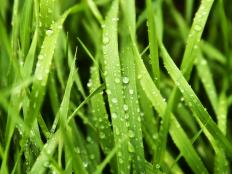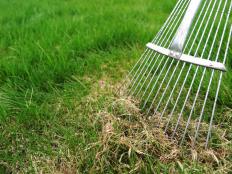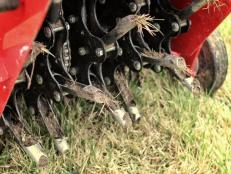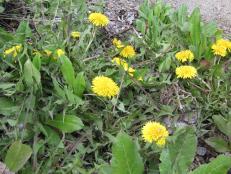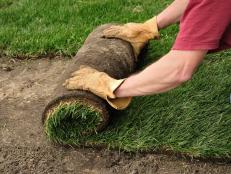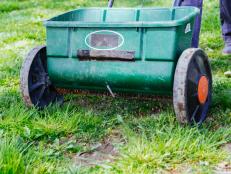Mowing and Trimming a Lawn
Mowing and trimming -- especially when done properly -- improve the health and appearance of your lawn, reduce its need for water, and lessen maintenance time.
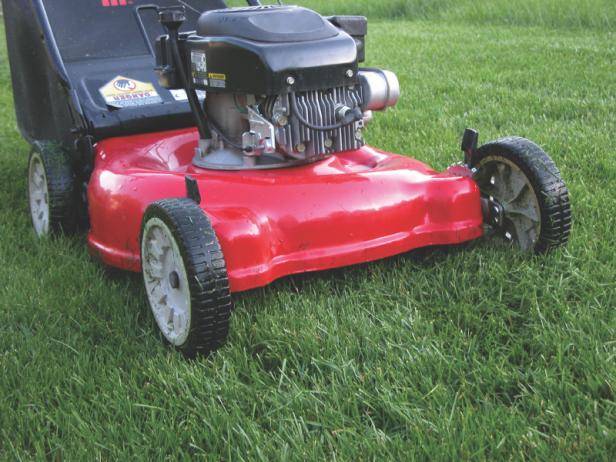
Tools and Materials
- String trimmer
- Rotary lawn mower with sharp blade
- Lawn mower
- Tape measure or ruler
- Rake
- Broom
Step 1: Trim first.
If you use a string trimmer, use it before mowing. The mower will chop the trimmings and reduce the need for raking.
Do not use line trimmers to cut grass against the bark of trees. This will damage the bark, often severely enough to kill the tree. Instead, establish a grass-free, mulched area around the tree so that close trimming is not necessary.
Step 2: Mow at the right height.
Each grass type has its ideal height range. Mow bahia, blue gramma, and buffalo grasses 2 to 3 inches high. Mow fescue, Kentucky bluegrass, ryegrass, and St. Augustine grasses about 1-1/2 to 2-1/2 inches high. Cut common Bermuda, centipede, and zoysia grasses about 1 to 2 inches high. Cut hybrid Bermuda lowest, about 1 inch high.
Step 3: Adjust the blade height.
Place your mower on a hard surface, disconnect the spark plug, and measure the height of the blades with a tape measure. Adjust the deck height to the desired level. Test the setting by mowing a patch of grass and checking the grass height. Adjust the mower as necessary. Mowing on the high side of the range improves drought resistance and root health.
Step 4: Keep it sharp.
Sharpen the blade of rotary mowers at least once a season. Disconnect the spark plug and with mower upended, remove the blade. Sharpen the blade on a bench grinder or with a heavy-duty mill file, and be sure to check blade balance afterwards (center it on a nail hammered into a wall). Or take your blade to a mower repair shop and let them sharpen it.
Step 5: Follow the one-third rule.
Mow when the grass blades are about one-third taller than the recommended height. To maintain grass at 2 inches high, for example, mow when it reaches no more than 3 inches. Only remove one-third of the grass height when you mow to prevent damage and stress to the lawn. Taking too much off at once starves the roots and may expose new lower leaves to sunburn.
Step 6: Mow grass when it's dry.
Wet grass cuts unevenly, and requires raking to remove the matted clippings, which smother the grass. Cutting wet grass also promotes the growth and spread of disease organisms.
Step 7: Rake up clumps.
Leave small and finely chopped clippings on the lawn where they will decompose and improve the soil's health, but remove clumps that can smother the grass. Sweep clippings off sidewalks and driveways for a neat appearance.
Tips
Keep your mower blades sharp to prevent damage to the grass blades. Ragged cuts invite disease and make the lawn look brown.
Alternate mowing directions each time you mow to help keep grass growing upright and to prevent soil compaction. Mow at a 45- or 90-degree angle to your last pattern.







